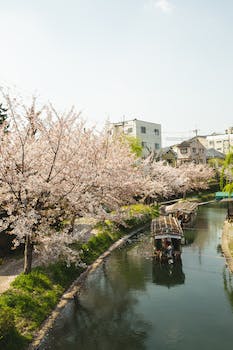

-
Table of Contents
Contrasting Belgium: A Tale of Two Regions - Uniting diversity, celebrating differences.
Introduction
Belgium, a small country located in Western Europe, is often referred to as a tale of two regions. This is due to the stark contrast between its two main regions, Flanders and Wallonia. Flanders, located in the northern part of the country, is predominantly Dutch-speaking and known for its prosperous economy, vibrant cities, and strong cultural identity. On the other hand, Wallonia, situated in the southern part, is primarily French-speaking and has faced economic challenges, with a more rural landscape and a distinct cultural heritage. These regional differences have shaped Belgium's history, politics, and societal dynamics, making it a fascinating case study of regional diversity within a single nation.
The Cultural Differences Between Flanders and Wallonia in Belgium
Belgium, a small country nestled in the heart of Europe, is often overlooked by travelers in favor of its more famous neighbors. However, this unassuming nation has a rich and complex history that is reflected in its unique cultural makeup. One of the most striking aspects of Belgian culture is the stark contrast between its two main regions: Flanders and Wallonia.
Flanders, located in the northern part of the country, is predominantly Dutch-speaking and is home to the vibrant cities of Brussels, Antwerp, and Ghent. Known for its picturesque canals, medieval architecture, and world-class art museums, Flanders is a hub of cultural activity. The Flemish people take great pride in their heritage and are known for their warm hospitality and love of good food and drink.
In Flanders, the influence of the Dutch is evident in the language, cuisine, and overall way of life. Dutch is the official language of the region, and the Flemish people are known for their impeccable command of it. Flemish cuisine is hearty and flavorful, with dishes like stoofvlees (beef stew) and waterzooi (a creamy chicken or fish stew) being local favorites. The region is also famous for its beer, with countless breweries producing a wide variety of styles to suit every taste.
Wallonia, on the other hand, is the French-speaking region of Belgium, located in the south. With its rolling hills, picturesque countryside, and charming villages, Wallonia is a haven for nature lovers and outdoor enthusiasts. The Walloon people are known for their laid-back attitude and love of the simple pleasures in life.
French is the official language of Wallonia, and the Walloon people take great pride in their linguistic heritage. The region's cuisine is heavily influenced by French gastronomy, with dishes like moules-frites (mussels and fries) and carbonade flamande (a beef and beer stew) being popular choices. Wine is also a big part of Walloon culture, with vineyards dotting the landscape and producing high-quality wines.
Despite their linguistic and cultural differences, Flanders and Wallonia share a common history and have managed to coexist peacefully within the Belgian state. However, tensions between the two regions have occasionally flared up, with debates over language rights and regional autonomy being hot-button issues.
The differences between Flanders and Wallonia extend beyond language and cuisine. The two regions also have distinct political systems, with Flanders leaning more towards conservatism and Wallonia being more left-leaning. This political divide has led to differences in economic development, with Flanders being more prosperous and industrialized compared to Wallonia, which has struggled with high unemployment rates.
Despite these differences, both Flanders and Wallonia have their own unique charm and offer visitors a wealth of cultural experiences. Whether you're exploring the cobblestone streets of Bruges or hiking through the picturesque Ardennes, Belgium has something to offer everyone.
In conclusion, the cultural differences between Flanders and Wallonia in Belgium are striking and reflect the complex history and heritage of this small but fascinating country. From the Dutch-speaking Flemish region with its vibrant cities and love of beer, to the French-speaking Walloon region with its picturesque countryside and love of wine, Belgium truly is a tale of two regions. So, next time you find yourself in Europe, don't overlook this hidden gem and take the time to explore the contrasting beauty of Flanders and Wallonia.
Contrasting Economic Landscapes: Flanders vs Wallonia in Belgium

Contrasting Economic Landscapes: Flanders vs Wallonia in Belgium
Belgium, a small country in Western Europe, is often referred to as a tale of two regions. The country is divided into two main regions, Flanders and Wallonia, each with its own distinct economic landscape. While Flanders has experienced remarkable economic growth and prosperity, Wallonia has struggled to keep up. This article will delve into the reasons behind these contrasting economic landscapes and explore the factors that have contributed to the divergent paths of these two regions.
Flanders, located in the northern part of Belgium, has emerged as a powerhouse in terms of economic development. With its strategic location and well-developed infrastructure, Flanders has attracted numerous multinational companies, making it a hub for international trade and investment. The region's strong focus on innovation and technology has also played a significant role in its economic success. Flanders boasts a highly skilled workforce and a thriving research and development sector, which has fostered a culture of innovation and entrepreneurship.
In contrast, Wallonia, situated in the southern part of Belgium, has faced significant economic challenges. Historically, Wallonia was known for its heavy industries, such as coal mining and steel production. However, with the decline of these industries, the region has struggled to adapt and diversify its economy. The lack of investment in research and development, coupled with a less skilled workforce, has hindered Wallonia's ability to attract new industries and create sustainable economic growth.
One of the key factors contributing to the divergent economic landscapes of Flanders and Wallonia is the difference in governance and policy approaches. Flanders has enjoyed a high degree of autonomy, allowing it to implement policies tailored to its specific needs. The region has embraced a pro-business approach, offering attractive tax incentives and fostering a business-friendly environment. In contrast, Wallonia has been more reliant on centralized decision-making, which has often resulted in slower and less effective policy implementation.
Another significant factor is the difference in cultural attitudes towards work and entrepreneurship. Flanders has a strong work ethic and a culture that values entrepreneurship and innovation. This mindset has encouraged individuals to take risks and start their own businesses, contributing to the region's economic growth. In Wallonia, there has been a more traditional approach to work, with a greater emphasis on job security and stability. This cultural difference has hindered the region's ability to foster a dynamic entrepreneurial ecosystem.
Furthermore, the education system in Flanders has been instrumental in shaping its economic landscape. The region has invested heavily in education, particularly in technical and vocational training, ensuring a skilled workforce that meets the demands of the modern economy. In contrast, Wallonia has faced challenges in its education system, with a higher dropout rate and a lack of emphasis on technical skills. This has limited the region's ability to attract high-tech industries and hindered its economic development.
In conclusion, the economic landscapes of Flanders and Wallonia in Belgium present a stark contrast. Flanders has thrived due to its strategic location, investment in innovation, and pro-business policies. In contrast, Wallonia has struggled to adapt to changing economic realities, hindered by a lack of investment in research and development, cultural attitudes towards work, and challenges in its education system. Understanding the factors that have contributed to these divergent paths is crucial for policymakers and stakeholders in both regions to address the economic disparities and work towards a more balanced and prosperous Belgium.
Language Divide: Examining the Contrasting Linguistic Identities in Flanders and Wallonia
Belgium, a small country nestled in the heart of Europe, is often referred to as a land of contrasts. From its rich history and diverse culture to its unique political structure, Belgium is a country that defies easy categorization. One of the most striking contrasts within Belgium can be found in its linguistic identities, particularly in the regions of Flanders and Wallonia.
Flanders, located in the northern part of Belgium, is predominantly Dutch-speaking. The Flemish people take great pride in their language, which is known as Flemish or Vlaams. Flemish is a variant of Dutch, with some minor differences in vocabulary and pronunciation. It is the official language of Flanders and is spoken by the majority of its inhabitants.
In contrast, Wallonia, situated in the southern part of Belgium, is primarily French-speaking. The Walloons, as the French-speaking Belgians are known, have a strong attachment to their language and culture. French is the official language of Wallonia and is spoken by the majority of its population.
The linguistic divide between Flanders and Wallonia is not merely a matter of language preference; it is deeply rooted in history and politics. Belgium has a complex history of linguistic tensions, dating back to the country's formation in the 19th century. At that time, Belgium was created as a bilingual country, with both Dutch and French recognized as official languages. However, over the years, the linguistic divide has become more pronounced, leading to a growing sense of linguistic and cultural identity in both regions.
The linguistic divide in Belgium is not limited to the spoken language; it also extends to education, media, and politics. In Flanders, Dutch is the language of instruction in schools, and most media outlets cater to a Dutch-speaking audience. In Wallonia, French is the language of instruction, and the media primarily serves a French-speaking audience. This linguistic division has had a significant impact on the political landscape of Belgium, with political parties often aligning along linguistic lines.
Despite the linguistic divide, Belgium has managed to maintain a delicate balance between its two linguistic communities. The country has a federal political system, with powers divided between the federal government and regional governments. This system allows for a certain degree of autonomy for Flanders and Wallonia, enabling them to preserve their linguistic and cultural identities.
However, the linguistic divide in Belgium is not without its challenges. There have been occasional tensions between the Flemish and Walloon communities, particularly in matters of language policy and regional autonomy. These tensions have occasionally flared up into political crises, but Belgium has always managed to find a way to resolve them and maintain its unity.
In conclusion, the linguistic divide between Flanders and Wallonia is a defining feature of Belgium's cultural landscape. The contrasting linguistic identities in these two regions reflect the country's complex history and political structure. Despite the challenges posed by this divide, Belgium has managed to strike a delicate balance between its linguistic communities, allowing for the preservation of their respective identities. As Belgium continues to evolve, it is this ability to embrace and celebrate its linguistic diversity that will undoubtedly shape its future.
Q&A
1. What are the two main regions in Belgium?
Flanders and Wallonia.
2. How do Flanders and Wallonia differ culturally?
Flanders is predominantly Dutch-speaking and has a stronger influence from neighboring countries like the Netherlands and Germany. Wallonia, on the other hand, is primarily French-speaking and has a stronger influence from France.
3. What are the main economic differences between Flanders and Wallonia?
Flanders has a more prosperous economy, with a strong focus on industries such as manufacturing, technology, and services. Wallonia, on the other hand, has a more struggling economy, with a reliance on traditional industries like coal mining and steel production.
Conclusion
In conclusion, Belgium is a country characterized by its contrasting regions, Flanders and Wallonia. These regions differ in terms of language, culture, and political preferences. Flanders, the Dutch-speaking region, is more prosperous and economically developed, while Wallonia, the French-speaking region, faces higher unemployment rates and economic challenges. The divide between these regions has led to political tensions and calls for greater regional autonomy. Despite these differences, Belgium has managed to maintain a peaceful coexistence and a unique federal structure that allows for the representation of both regions.












